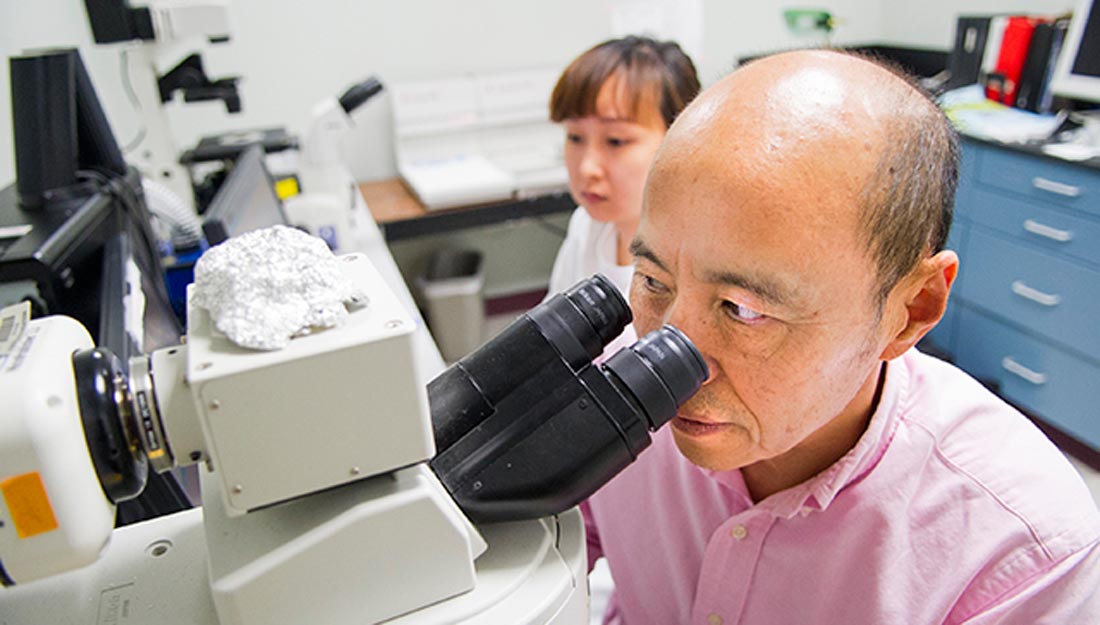Texas A&M dental school researchers working to engineer a “bio-tooth”

When it comes to regenerative medicine in dentistry, studies aimed toward whole tooth reengineering stand to revolutionize the future of dental treatment. There’s just one problem: In order to regenerate an entire tooth, researchers must learn how to grow cells to form both the tooth crown, the visible part of the tooth, and the tooth root, the portion under the gum line that is buried in bone and anchors the tooth in position.
“With tooth regeneration, the problem is not in the crown, it’s in the root,” says Dr. Jerry Feng, professor of biomedical sciences at Texas A&M University Baylor College of Dentistry. “You can easily make a crown, but you can’t easily make a root.”
That’s because formation of the tooth root, composed of dentin, is different than in the crown, which forms prior to the root and is composed of dentin and enamel.
“The biology is more complex than what we used to believe,” says Feng.
In July, funding will begin on a $1.8 million grant from the National Institutes of Health – National Institute of Dental and Craniofacial Research that will allow Feng and TAMBCD researchers to further study the mechanisms involved in tooth root formation, which until now has been infrequently studied and not well understood.
“This has applications not only in science, in filling that knowledge gap, but also for future regeneration of the whole tooth,” says Feng.
While a “bio-tooth” could provide an alternative to dental implants and restorations for problems ranging from dental trauma to periodontal disease, Feng explains that these potential uses won’t come to fruition immediately.
“To regenerate the whole tooth, we have a long way to go — likely years,” says Feng.
Still, preliminary studies show great promise. Feng’s team is focusing their research on the role of osterix, a gene vital in skeletal formation, but still a mystery in terms of its function in tooth biology. Preliminary studies in mouse models have already shown that while removal of osterix has no impact on the tooth crown or even the pulp chamber, which houses the tooth’s nerves, blood vessels and connective tissues, a lack of osterix causes the tooth root to become stunted, thin and even fracture, signaling the need for its presence in tooth root formation.
In addition to osterix, the research will include a closer look at other factors impacting tooth root formation. With help from Dr. Stephen E. Harris, a professor in periodontics at the School of Dentistry at University of Texas Health Science Center San Antonio, they’ll compare the expression pattern of every gene in the tooth root versus the tooth crown through RNA- and next-generation DNA sequencing.
“First, we need to figure out the role of osterix so we can figure out how to have a healthy tooth, but we also need to look at other genes,” Feng says. “That’s part of the reason we have this grant, to study genes in tooth formation. Hopefully through this study we’ll find more.”
Media contact: media@tamu.edu


